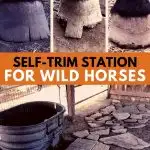If you have ever seen pictures of wild horse hooves you probably know they typically look amazing. How is it that a wild horse can have such beautiful hooves without the care of the farrier? To answer that we have to think about the environment that they are in and how they travel.
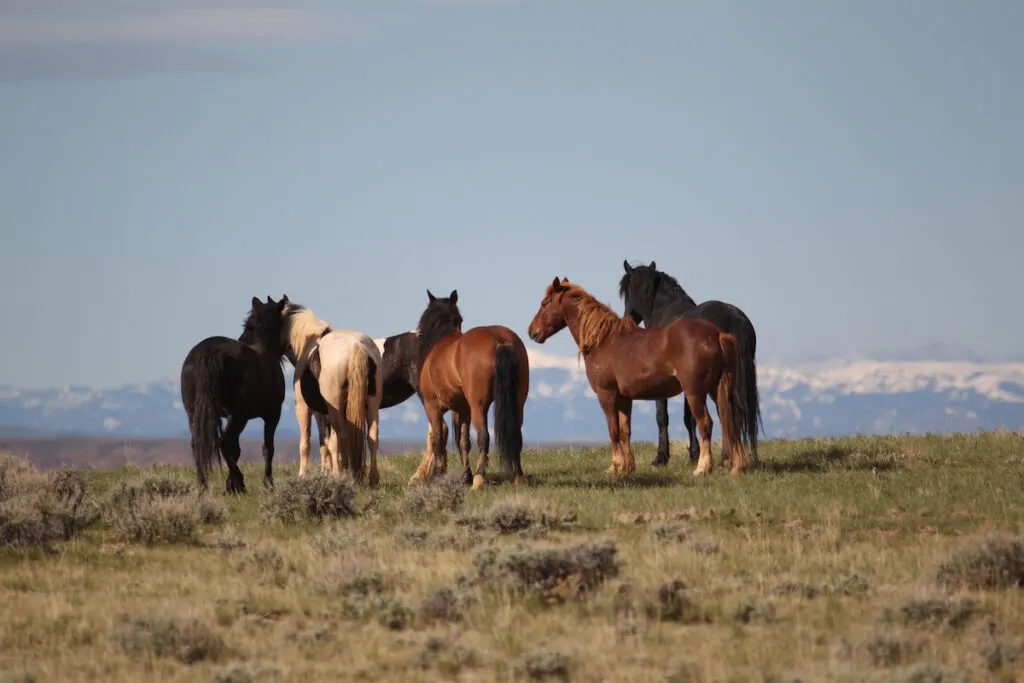
Horses in the wild typically walk several miles each day to graze and drink water. Their terrain can vary quite significantly depending on their specific area. They may have to travel over any of the following:
- Flat, grassy land
- Dirt and rocks
- Mountains and Hills
- Snow and Ice
- Water
It is the varied terrain that actually helps the wild horse maintain such great looking hooves.
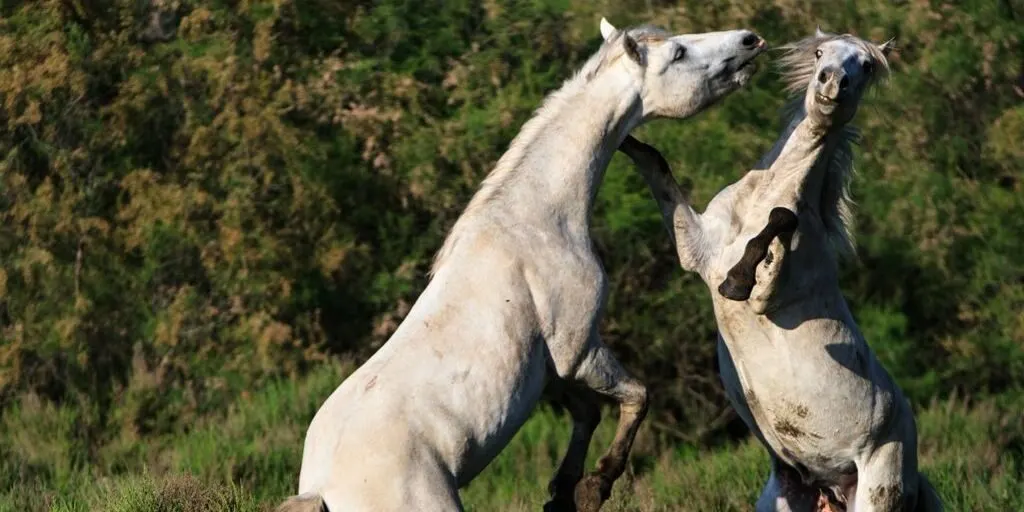
Table of Contents
Wild Horse Hoof Trim
In the wild, the “trimming” process happens naturally for horses (and donkeys). One of the biggest differences between wild horses and our own domestic ones is the distance traveled each day.
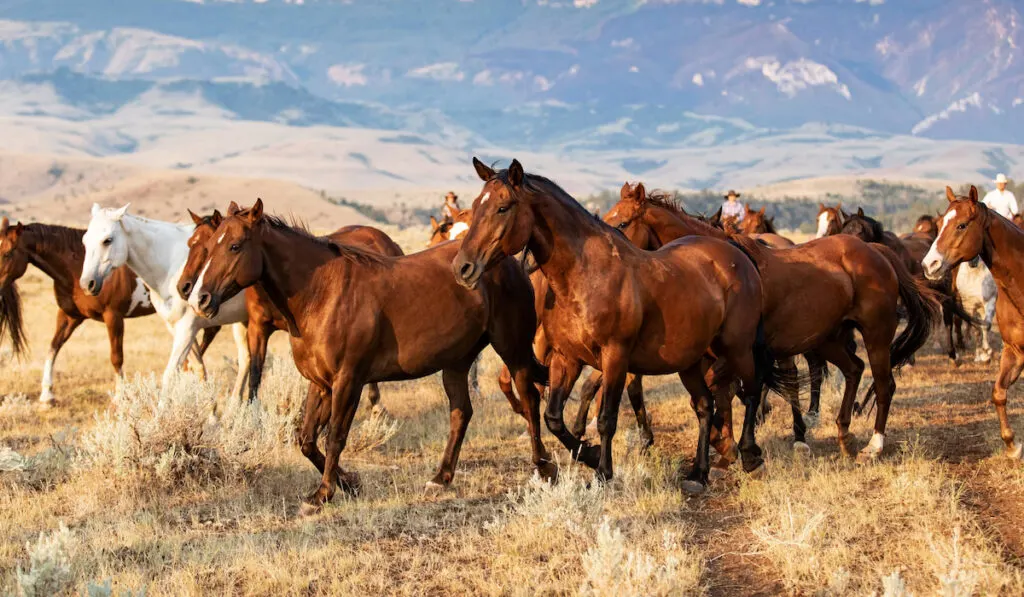
Because the wild horse herds must travel for food and water, their hooves are naturally worn down on a daily basis. Domestic horses, on the other hand, spend a lot of their time sedentary on a perfectly level and relatively soft ground.
Over time, their hooves grow out and we hire farriers to come and trim them back. This works great for domestic horses who are gentle and easy to handle but it isn’t feasible for horses that aren’t halter broke or used to being touched by humans.
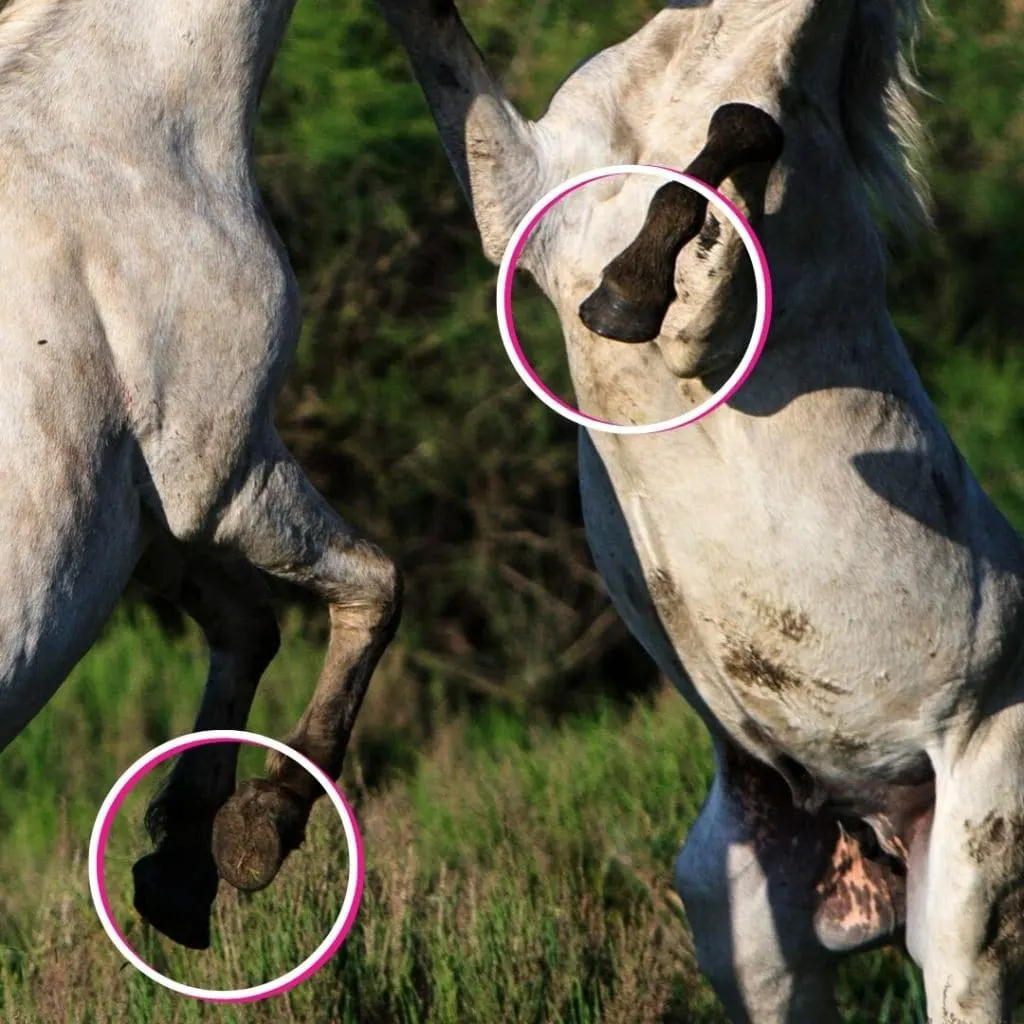
Overgrown Horse Hoof Problems
What to do if your own horse has feet that are overgrown but the horse doesn’t yet have the training to stand for a farrier? How can we take what we know about wild horse hoof care and apply it to our domestic horses?
Some mustang adopters, specifically, have this issue when their recently adopted wild horse doesn’t come around to training quickly, for whatever reason. In these cases, the horse’s feet grow out faster than the horse’s training has progressed to where they can be trimmed.
Luckily, the wild horse community has found a solution that seems to work well. That solution? Mimic, as much as possible, the varied terrain in the wild.
Setting Up a Self Trimming Station
Since a horse in a pen doesn’t have varied surfaces, you need to create them. This can most easily be done using natural stones and rock.
Preferably you will create this rocky area near the only water source the horse has access to. This will ensure that the horse visits the area several times a day.
Additionally, overflowing the water tank can speed up the process greatly, especially in the summer. The softer a horse’s hooves are, the more easily they will break off when coming into contact with the stone.
Materials Needed
- Rough Textured Stepping Stones
- Broken Pieces of Rough Concrete
- Flagstone
- Large gravel or river rock
In this case, concrete stepping stones and flagstone were used. You can get somewhat creative with your materials.
If funds are an issue look around your property, check craigslist and ask your friends what they have lying around.
The idea is to have pieces like shown below, because each piece will have an edge that can start chipping away at the hooves.
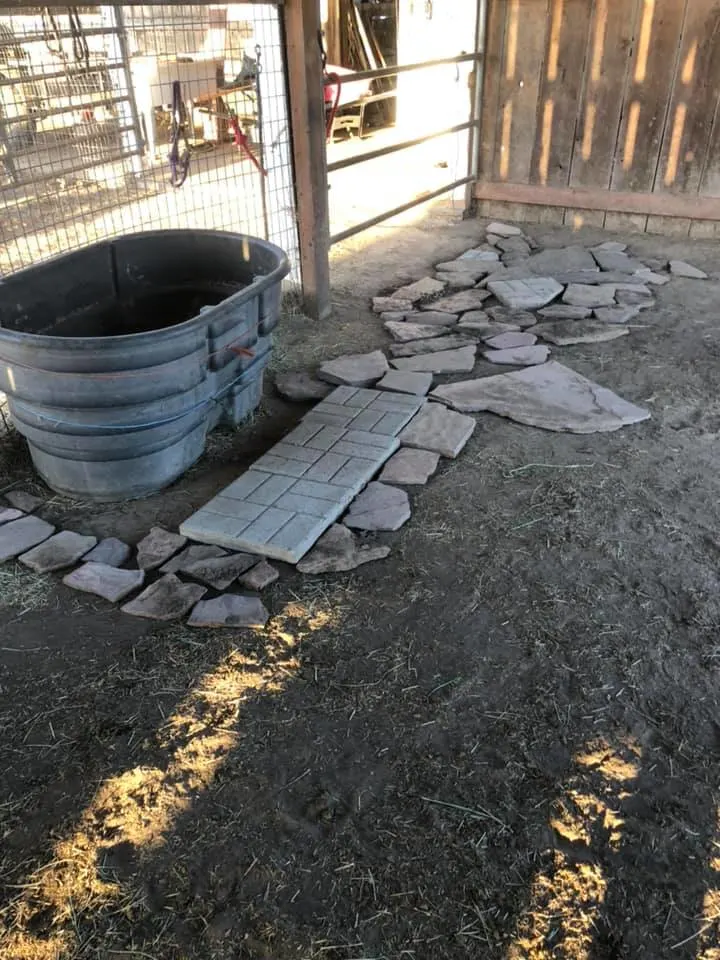
Length of Time Needed
How long it takes for your horse to reach a relatively good hoof length is really going to depend on your horse, the environment, the weather, etc.
There is no hard and fast answer. It could take a couple of weeks, as it did for the horse below, or it could take a couple of months.
The sooner you start, the sooner you will see results. Remember to take before, during and after photos so you can monitor progress!
The Results
This is August 1st before the above setup was implemented. You can see that these feet are extremely long. With this horse not being halter broke, the options were limited.
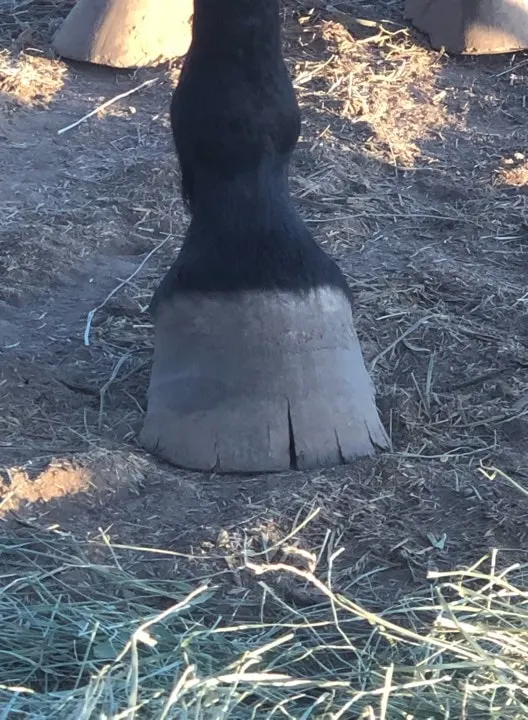
Sure, some would say to put the horse in a makeshift chute. The reality is trying to do that with a truly wild horse, one that is afraid to be touched let alone confined and have its feet handled, is extremely dangerous for the horse and anyone nearby.
Tranquilizing could also cause the horse to startle and run or even crash into panels. With a wild horse, their adrenaline kicks in and starts to counteract the drugs.
But, they can feel the drugs so they start to panic. The drugs cause instability, panic causes flight and the result is very possibly a horse crashing into anything and everything to “get away”.
Instead, a more natural approach as pictured above was taken.
2 Weeks Progress
Here is the result about two weeks later, on September 1st. We can see that the horse’s feet are starting to chip away as they would while traveling over varied terrain in the wild.
They still have a ways to go but things are starting to look much better and are moving in the right direction.
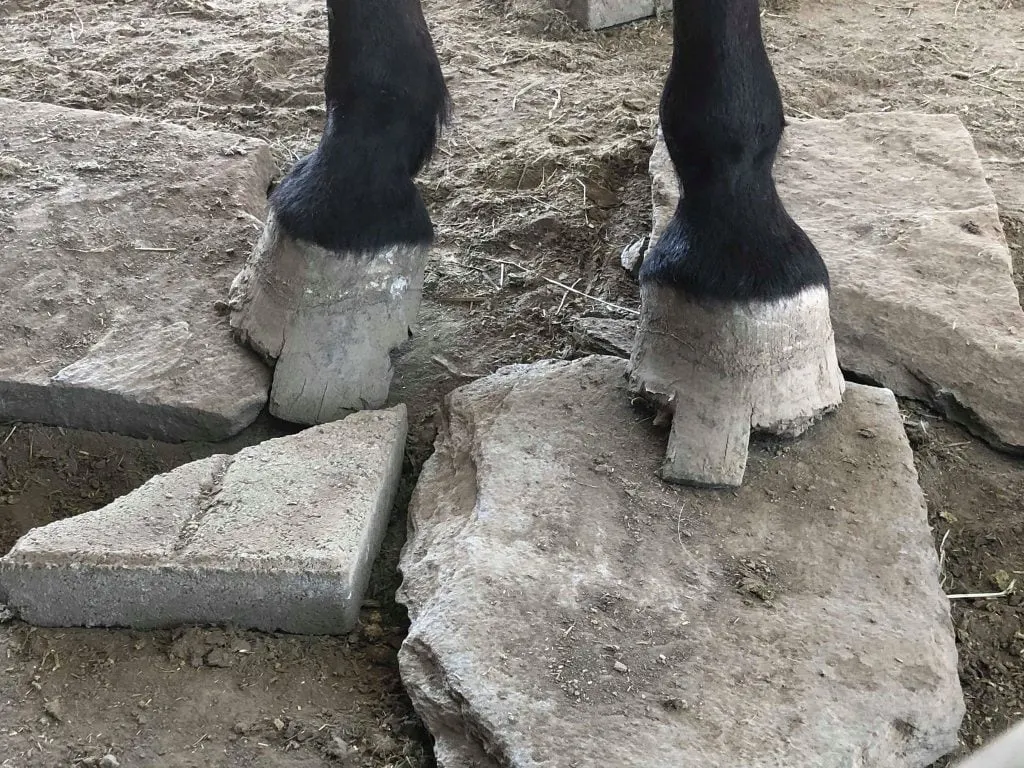
3 Week Progress
Here we can see the final result. This hoof will continue to get smooth and rounded but it is clearly evident how much difference has been made. The now shorter hoof will be much more comfortable for this horse.
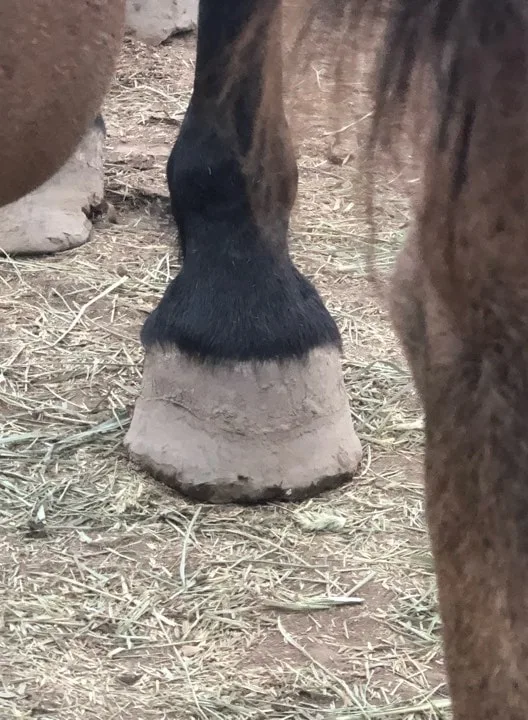
Before & After
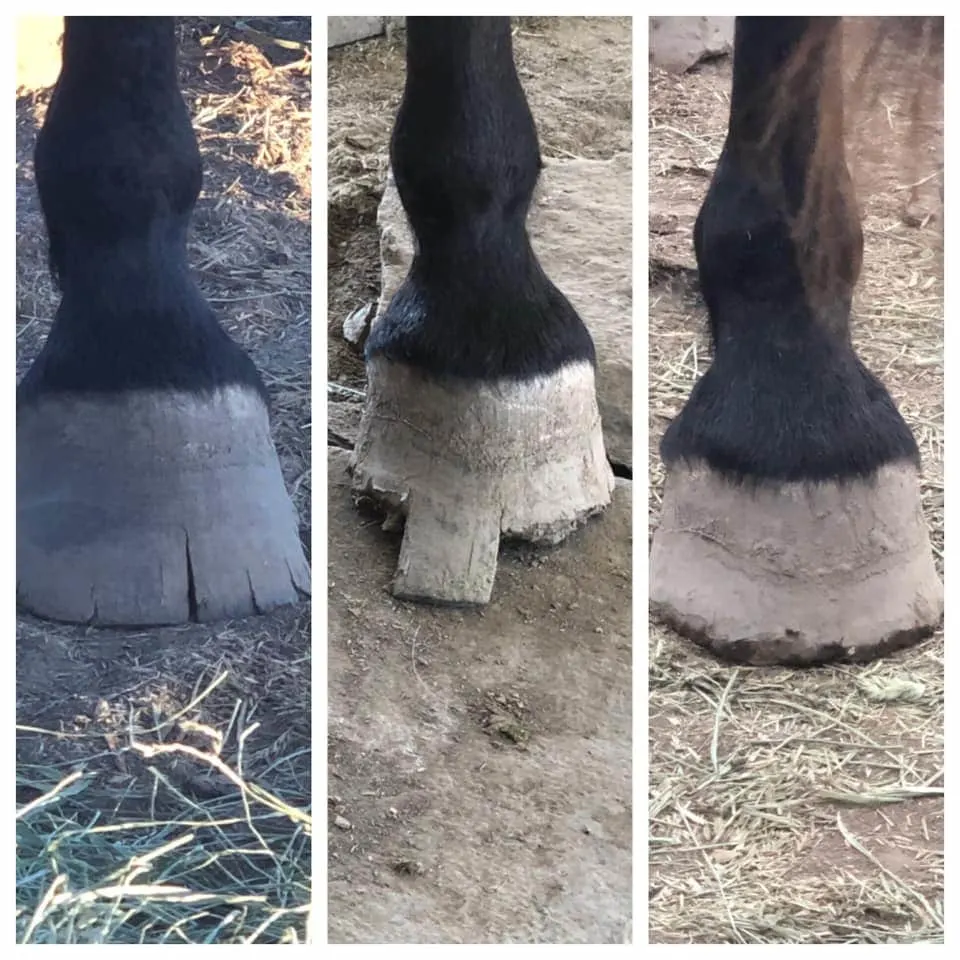
Expanded Area to Help with Back Feet
In a setup like the one shown above, depending on your horse’s habits, his back feet may not come into contact with the self-trimming station as often as the front feet.
In this case, if the horse’s back feet are also too long, consider extending the radius of the self-trimming station so his back feet have ample opportunity to contact the stones as well.
Additionally, if you are using the soaking method, try to make sure there is enough wet ground for the front and rear hooves to soak.
Final Thoughts
Ideally, we should get a horse well trained and gentle enough to allow a professional farrier to work on their feet. Unfortunately, whether you are dealing with wild horses or domestics, that is not always possible. In those cases, a setup like the one above may help.
There is an exception. Once a horse’s feet have started to curl upwards, as seen with severe neglect cases, you will want to make sure to consult your veterinarian immediately to assess the situation and make a recommendation.
Keep in mind that this isn’t a 100% guaranteed solution. It is also possible that a horse chips a large piece off and goes sore or lame. Because this isn’t a controlled trim, like a farrier would do, that is a possibility.
When your choices are to leave the horse extremely long or let them try to self trim, I personally would choose to allow them to self-trim.
Related Posts
- Mustang Horse Color Guide
- Types of Mustang in the United States
- What Wild Horses Eat – Diet of the American Mustang
- All Mustang Posts in the Mustang Horse Category

